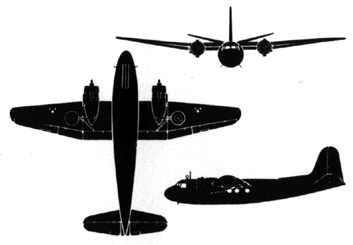You are not logged in.
Dear visitor, welcome to WesWorld. If this is your first visit here, please read the Help. It explains in detail how this page works. To use all features of this page, you should consider registering. Please use the registration form, to register here or read more information about the registration process. If you are already registered, please login here.

Quoted
[SIZE=4]T1C Constelación Twin Condor Utility Aircraft[/SIZE]
The Condor is a twin-engined, high-winged aircraft designed for use off extremely short or rough airfields, and in all weather conditions. The aircraft, nicknamed "TwinCon" or "Condorito", has a short take-off and landing roll. In the short time since its introduction, the Condor has become one of the most successful planes ever built in Chile, receiving orders from LAN, Fuerza Aérea de Chile, the Chilean Department of Geosurvey, and numerous other small aircraft operators.
[SIZE=3]Specifications:[/SIZE]
- Crew: 1-2
- Passengers: 18
- Length: 47 feet
- Wingspan: 59 feet
- Height: 16 feet
- Wing area: 410 ft²
- Empty weight: 5,520 pounds
- Loaded weight: 10,000 pounds
- Powerplant: 2x Gipsy Six (200hp), or Canadian Orenda engines
[SIZE=3]Performance:[/SIZE]
- Maximum speed: 150 knots (172mph)
- Max Range: 700 nautical miles (engine dependent)
- Service ceiling: 18,000 feet
- Rate of climb: 7 ft/s (2.13 m/s)
[SIZE=3]Production History:[/SIZE]
- Serie-100 (1936): Current production
- Serie-200 (1937): Current production
- Serie-300 (1940): New Fowler flaps, improved fuselage, new flight controls
- Serie-400 (1942): All-metal fuselage, new engines
[SIZE=3]Notes:[/SIZE]
N/A
Quoted
[SIZE=4]Constelación Twin Condor, Serie-350/400 Utility Aircraft[/SIZE]
[SIZE=3]Specifications:[/SIZE]
- Crew: 2+
- Passengers: 18+
- Length: 50 feet
- Wingspan: 62 feet
- Height: 17.5 feet
- Wing area: 415 ft²
- Empty weight: 6,000 pounds
- Loaded weight: 11,000 pounds
- Powerplant: 400-600hp radials or inlines as desired (Serie-350); 2x Austral Malacara-A2 (650hp) turboprops (for Serie-400)
[SIZE=3]Performance:[/SIZE]
- Maximum speed: 165 knots (190mph)
- Max Range: 900 miles
- Service ceiling: 7,500 meters / 24,600 feet
- Rate of climb: 7.5 ft/s (2.29 m/s)
Quoted
Originally posted by Brockpaine
- Powerplant: 400-600hp radials or inlines as desired (Serie-350); 2x Austral Malacara-A2 (650hp) turboprops (for Serie-400)
Quoted
Originally posted by Red Admiral
The Savoia-Marchetti SM.82 would seem to nicely fit those specs. It exceeds most of the specs, but might be rather larger than Argentina needs. However, with the deep fuselage and large belly door, it is easy to convey large loads (such as aircraft or tanks) that would give much greater flexibility. The aircraft is of simple construction and easy to repair with the mixed construction.
Quoted
Originally posted by BruceDuncan
Are these specs posted somewhere? I've looked and cannot find them. I'm guessing that the design is not the OTL SM.82, and it sounds intriquing.
Quoted
Originally posted by Red Admiral
Quoted
Originally posted by BruceDuncan
Are these specs posted somewhere? I've looked and cannot find them. I'm guessing that the design is not the OTL SM.82, and it sounds intriquing.
No, it really is the historical SM.82. The wikipedia article isn't actually too bad (most of the Italian WWII aircraft ones are quite good). I'll point you towards some other things later on when I'm back. I have a nice shot of a CR.42 inside an SM.82.
Quoted
Originally posted by BruceDuncan
Thank you for the pointer. I did not think the SM.82 had a ventral cargo door.
Quoted
Originally posted by Red Admiral
Quoted
Originally posted by BruceDuncan
Thank you for the pointer. I did not think the SM.82 had a ventral cargo door.
I'm pretty sure the loading procedure was from the front, rather than jacking the aircraft up from the rear. It's a two deck aircraft with a large ventral door and old for some cargo, and then a removeable floor to the second storey if oversize loads need to be carried. It's an interesting arrangement that seemed to work fairly well in practice.
Quoted
Originally posted by Hood
Argentina is interested in both types. There are problems with both types however but we'll discuss those later.
The contest remains open to see if there are any more takers.
Argentina could order more Ju-52s if it wished but it wants a newer aircraft and it wants the best.
Quoted
[SIZE=4]Constelación Twin Condor, Serie-400 Utility Aircraft[/SIZE]
[SIZE=3]Specifications:[/SIZE]
- Crew: 2+
- Passengers: 20
- Length: 52 feet
- Wingspan: 65 feet
- Height: 17.5 feet
- Wing area: 422 ft²
- Empty weight: 6,500 pounds
- Loaded weight: 11,750 pounds
- Powerplant: 2 × 715hp FMA RR-14-2-B radials
[SIZE=3]Performance:[/SIZE]
- Maximum speed: 180 knots (207 mph / 333 kph)
- Max Range: 900 miles
- Service ceiling: 7,500 meters / 24,600 feet
- Rate of climb: 7.5 ft/s (2.29 m/s)
[SIZE=3]Armament (Optional):[/SIZE]
- 1 × .30cal or .50cal machine gun in dorsal hatch


Forum Software: Burning Board® Lite 2.1.2 pl 1, developed by WoltLab® GmbH
